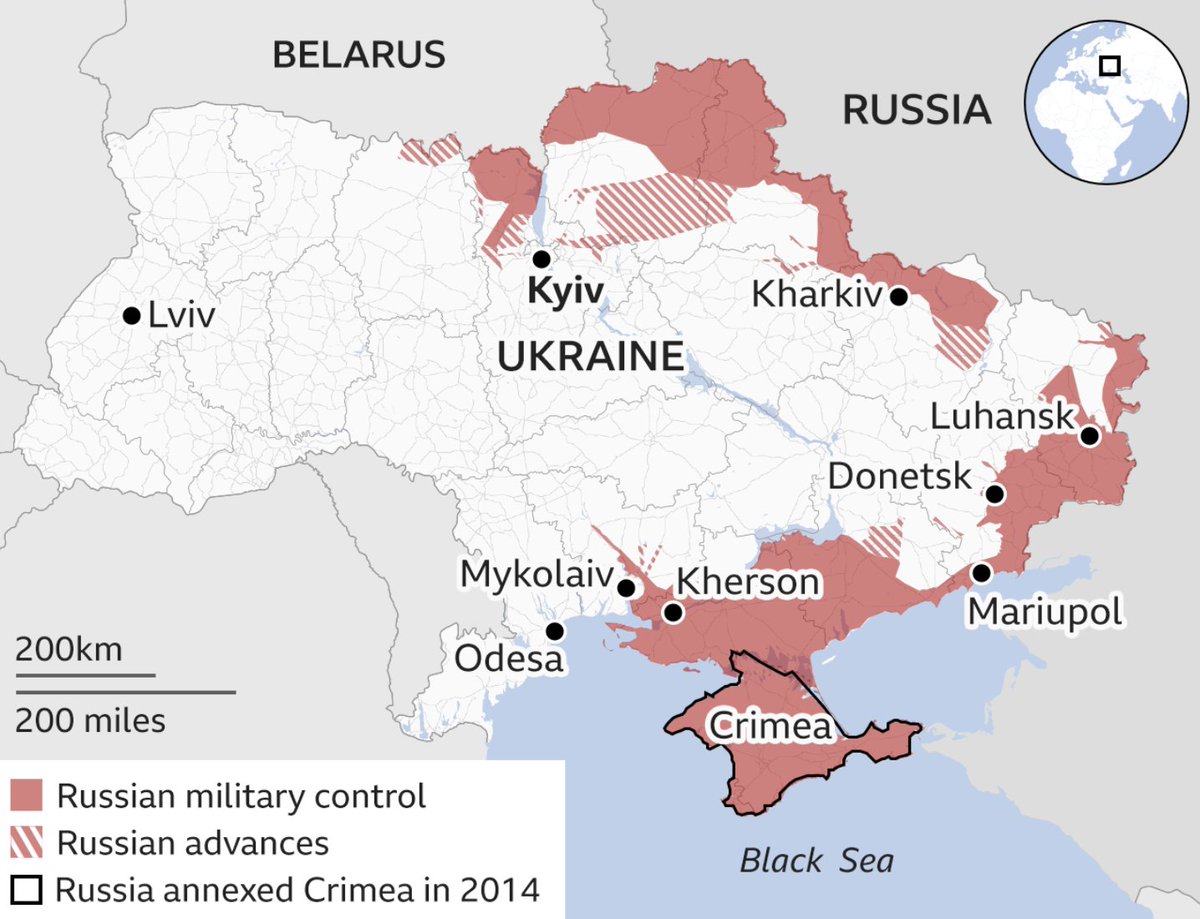
10) ... it makes sense the Russians will hold a line stretching south from the west of of Kiev down to somewhere along the Moldavian border (Transnistria). Or west of a line along the M05 highway. This would completely cut off Ukraine from the Black Sea, a strategic objective. 

11) The M05 highway runs north-south from Kiev to Odesa. Again this is an operation that would take weeks or months to develop. But if Kiev falls this changes the timeline calculus.
12) Kiev is without a doubt a strategic objective for the Russians but by no means the only objective. A look at the RUSMIL offensive shows this operation was not launched in haste because Kiev didn't fall and Zelensky didn't capitulate on day 2.
13) Zelensky may be recognizing that his strategic position is untenable. In the past 48 hours he has "cooled down" on the idea of joining NATO and said he'd discuss the status of Russian occupied and "control of Russian-backed separatist regions."
yahoo.com/news/ukraines-…
yahoo.com/news/ukraines-…
14) One final point: the UKR strategy appears to be that of defending the cities, and bleeding Russian forces. And they are doing this well. This is a fine short-term strategy if you think the Russians will quit the fight. But the UKRs face encirclement over long term.
• • •
Missing some Tweet in this thread? You can try to
force a refresh








